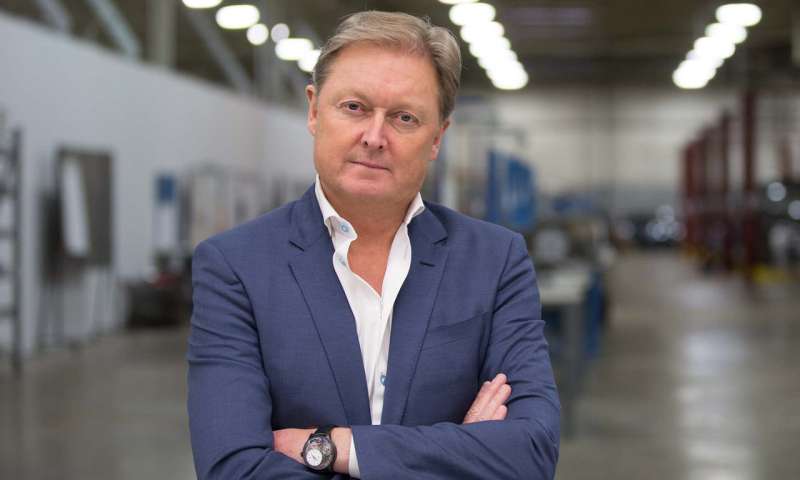A 2016 photo of automotive designer Henrik Fisker. Credit: Eric Graciano/CC BY-SA 3.0
Battery-breakthrough stories continue with expectations that in time we will finally get some answers—that some innovator confronting issues of traditional lithium ion batteries will figure out an economy of manufacture behind new technology to resolve shortcomings.
The breakthrough stories often sound great, in theory. An observation by Elon Musk might have resonance for cynics who find it difficult to accept all the claims. During an earnings call last year, Elon Musk said, "Everything works on PowerPoint. I could give you a PowerPoint presentation about teleportation to the Andromeda Galaxy. That doesn't mean it works."
An Automotive News article of August 18 gives us a sober view of where we stand in 2018; efforts are quite strong to come up with answers. The article said Volkswagen AG, Hyundai Motor Co. and Renault-Nissan-Mitsubishi have channeled funds into battery companies. The Japanese industry group New Energy & Industrial Technology Development Organization announced it will spend $90 million on researching solid-state devices with universities and manufacturers.
"There is a tremendous amount of money being put into battery research right now," said Peter Carlsson, CEO of NorthVolt AB, a Stockholm-based company that's constructing a battery manufacturing facility.
No doubt, too, attention is being paid to the latest news about Henrik Fisker, car designer and entrepreneur, known for his work on the Fisker EMotion, an all-electric sedan. He has gone the solid state route in batteries. Sean O'Kane's report in The Verge was the highly quoted talking point.
Fisker told The Verge his company was just months away from putting "the finishing touches on the final design for a scalable solid-state battery" to power his company's four-door, all electric car to come.
O'Kane delivered a verdict on Fisker's solid-state batteries: "If Fisker's company is truly as close to what he's promising, then, he could have a hit on his hands. But he has to prove that it works."
Steve Goldberg in Inc. discussed the special nature of solid-state batteries and said that "existing solid-state batteries can't generate enough juice to push a car," said Goldberg, and "they can't be manufactured at scale."
Now Fisker is ready to change the game somewhat. Fisker's solid-state battery can produce 2.5 times the energy density that lithium-ion batteries can, at perhaps a third of the cost, said Goldberg.
The team have worked up a three-dimensional solid-state battery, or bolt battery, which is thicker and has enough power to move a vehicle. Fisker's battery delivers more energy density than can lithium-ion batteries at less cost.
What's next: His company is in discussions with automakers regarding the new technology, said Steven Hanley in CleanTechnica.
Inc. quoted Fisker: "We have built batteries with better results quicker than we thought."
What makes Fisker so confident he can produce these rapidly at an affordable cost? The Verge quoted his remarks on manufacturing advantages of his battery:
"Fisker says he's also figured out how to bring down the cost, too, which he attributes to a manufacturing breakthrough. "We have solved how to produce [three-dimensional solid-state cells] accurately, repeatedly, and very fast," Fisker says. "In a normal lithium-ion battery manufacturing, you're looking at about 18 different steps of manufacturing, and you're looking at, from the day the material comes in to the day you have a fully charged battery that you ship, it's about 50 to 60 days. That's an incredibly long time." Fisker says his solid-state battery, meanwhile, will take "less than 10 days" from start to finish."
O'Kane noted, however, that "Fisker won't say how his new company will manufacture solid-state batteries at this speed. He also won't say what materials he's using in the battery."
© 2018 Tech Xplore






















